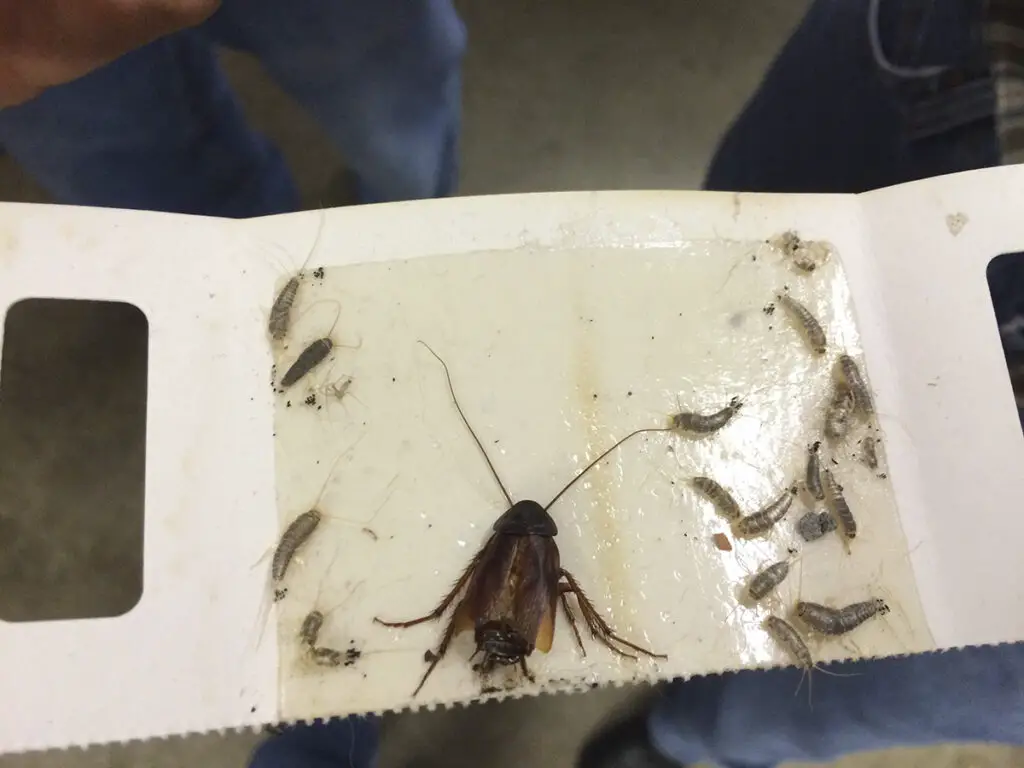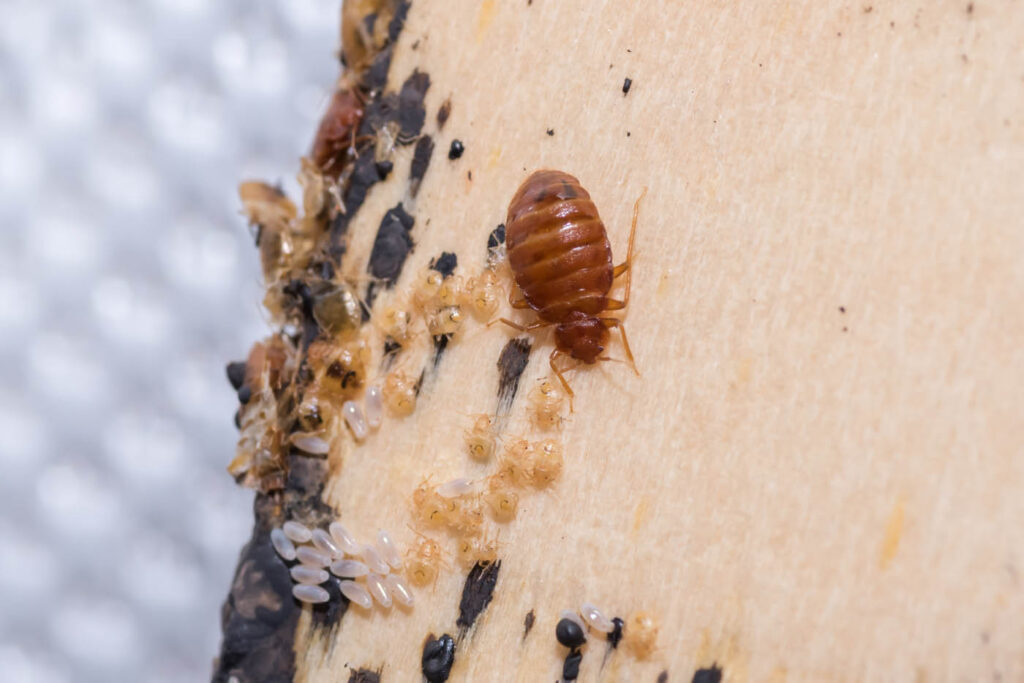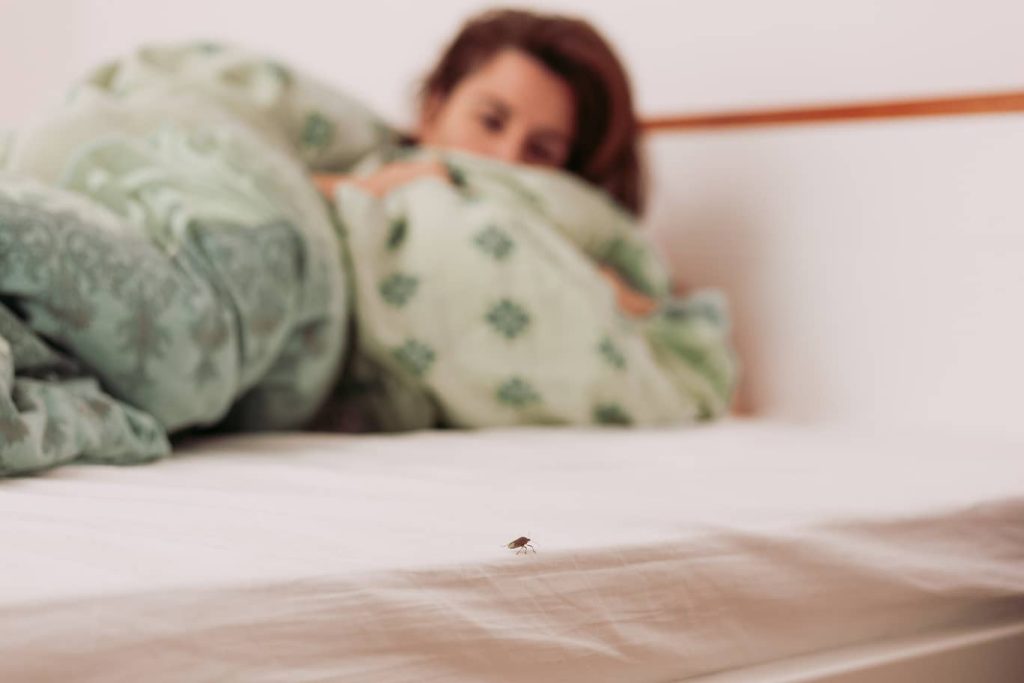Discovering bed bugs in your home can be unsettling. Using glue traps is one method to monitor and control these pests. This guide provides a straightforward approach to using glue traps effectively, ensuring you’re prepared to tackle a bed bug infestation head-on.
Understanding Bed Bug Glue Traps and Their Effectiveness
Bed bug glue traps are designed to catch bed bugs by trapping them on a sticky surface. These traps are used to detect bed bugs in the early stages of an infestation. They serve as a monitoring tool to gauge the severity of the situation before deciding on more extensive pest control measures. Although not a standalone solution, glue traps can provide valuable insights into bed bug activity in your home.
When assessing the effectiveness of glue traps, it’s vital to understand that these tools help identify the presence of bed bugs but are not typically a means to eradicate them. Bed bugs are attracted to the warmth and carbon dioxide released by humans, not necessarily to the glue traps themselves. Therefore, these traps should be part of a comprehensive pest control strategy.

Do Glue Traps Deter Bed Bugs?
While glue traps can capture bed bugs, they do not actively deter these pests. Instead, they are passive bed bug traps and diagnostic tools to confirm an infestation. Professional exterminators may use them to assess the extent of the problem and decide on their approach to treatment.
The Science Behind Glue Traps for Bed Bugs
Glue traps utilize a simple yet effective mechanism: a sticky adhesive that immobilizes bed bugs as they crawl across it. The science is straightforward—once bed bugs are attracted to the vicinity of the trap, they get stuck, thus reducing the active population and aiding in infestation control.
Comparing Active and Passive Glue Traps
Passive glue traps rely on the natural movement of bed bugs, capturing them as they wander, and active glue traps incorporate attractants like heat or pheromones to lure bed bugs in. Each type has its place in bed bug management. The choice depends on the specific circumstances of the infestation.
Identifying the Right Time to Deploy Bed Bug Glue Traps
The optimal time to use glue traps is at the first sign of a potential infestation. Early detection allows for quicker intervention. It can limit the spread of bed bugs throughout your residence. Don’t hesitate to place glue traps around your home if you suspect bed bugs.
Signs of Infestation Warranting Glue Trap Usage
Signs warranting the use of glue traps include blood stains on bedding, bed bug fecal spots, and sightings of the bugs themselves. If you notice these indicators, it’s time to deploy glue traps to confirm and monitor the infestation.
Preventative Measures Through Early Glue Trap Placement
Even with no signs, placing glue traps as a preventative measure can offer peace of mind. Early placement in strategic locations can alert you to bed bugs before an infestation becomes widespread, allowing for prompt and effective treatment.
Strategic Placement of Bed Bug Glue Traps
For glue traps to be effective, strategic placement is crucial. Positioning them near areas where bed bugs are likely to travel or hide enhances the likelihood of capture, providing a clearer picture of the infestation’s scope.
Key Areas in Your Home for Glue Trap Placement
Focus on placing glue traps in areas where bed bugs congregate, such as around the bed, near furniture, and along baseboards. These locations are common pathways for bed bugs to and from their hiding spots.
Avoiding Common Mistakes in Glue Trap Positioning
Avoid common placement errors like putting traps in areas with heavy dust or behind furniture where bed bugs are less likely to travel. Ensure traps are easily accessible for regular checks and maintenance, which is crucial for timely detection.

The Variety of Bed Bug Traps Available
There are various bed bug traps on the market, each designed with specific features to target these elusive pests. Understanding the options allows you to choose the most appropriate traps for your situation, optimizing your defense against bed bugs.
Passive Glue Traps: A First Line of Defense
Passive glue traps are a simple and cost-effective option. They rely on the natural behavior of bed bugs, capturing them without the use of attractants, making them a suitable first line of defense in identifying an infestation.
Active Glue Traps: Luring Bed Bugs Effectively
Active glue traps enhance trapping by incorporating attractants that draw bed bugs in. These traps can be effective in pinpointing infestations, as they encourage bed bugs to leave their hiding spots and get caught.
Interceptors vs. Glue Traps: Understanding the Differences
Interceptors and glue traps serve different purposes in bed bug management. Interceptors are placed under bed legs to catch bed bugs as they climb up, whereas you place glue traps anywhere you expect them to travel, offering broader monitoring capabilities.
Crafting Your Bed Bug Glue Trap at Home
Creating your bed bug glue trap is straightforward. You can craft a tool to monitor these pests with simple materials. DIY traps can be nearly as effective as professional bed bug traps. Before you start, gather all the necessary items for your homemade glue trap.
Materials Needed for a DIY Bed Bug Glue Trap
You’ll need a few supplies to begin making your DIY traps. These include a sturdy base like cardboard, a non-toxic glue, and bait such as a sugar and yeast mixture to mimic the carbon dioxide exhaled by human hosts. Some people also refer to studies in the Journal of Economic Entomology that suggest adding heat as an attractant, guiding bed bugs toward an interceptor trap.
Step-by-Step Instructions for Homemade Glue Traps
Start by cutting your cardboard base to the desired size. Mix your sugar and yeast bait to create carbon dioxide. Apply a generous amount of glue to the cardboard and place the bait in the center. Place the trap near the legs of your bed or in other areas where bed bugs are likely to crawl. Check the trap regularly for signs of bed bugs.
Top Recommended Commercial Bed Bug Glue Traps
Commercial bed bug glue traps are an option for those who prefer not to DIY. These traps detect bed bug infestations and act as a barrier between the floor and your bed. Let’s look at some of the top recommended products that can help you in your fight against bed bugs.
Trapper Max Glue Traps: A User’s Guide
Trapper Max Glue traps attract bugs using their sticky surface. These traps are placed strategically where bed bugs are suspected to travel. They are easy to use and can be placed discreetly under furniture and beds.
ASPECTEK Sticky Dome: Features and Usage
The ASPECTEK Sticky Dome capitalizes on mimicking the allure of a sleeping human by generating body heat, which bugs like. This feature enhances the trap’s effectiveness, making it a popular choice for those dealing with bed bug issues in their sleeping areas.
ECOPEST Interceptors: How They Compare to Glue Traps
ECOPEST Interceptors differ from traditional glue traps; they capture bed bugs without adhesive. These devices are placed under the legs of furniture, trapping bed bugs as they attempt to climb up. They are a great, non-toxic alternative to glue traps.
Maximizing the Effectiveness of Bed Bug Glue Traps
Use these traps with other methods to get the most out of bed bug glue traps. Regular inspections, proper placement, and maintenance are crucial to ensuring these traps are as effective as possible in capturing these elusive pests.
Tips for Routine Check and Maintenance of Glue Traps
Check your glue traps regularly for bed bugs and replace them once they are full or dust-covered. Ensuring the glue surface remains sticky is crucial for the trap’s effectiveness. Keep traps away from areas with debris or dust that may hinder their performance.
Combining Glue Traps with Other Bed Bug Control Strategies
While glue traps play a role in controlling bed bugs, they should be part of a broader strategy. Combine them with bed bug interceptors to prevent bed bugs from reaching your bed, and consider using diatomaceous earth or professional treatments to eliminate bed bugs.

Limitations and Considerations When Using Glue Traps
Glue traps alone may not eliminate a bed bug infestation. They serve as monitoring tools. There are certain limitations to their use, which you should consider as part of your pest control plan.
Understanding the Potential Drawbacks
Glue traps may not capture all bed bugs, as these pests can avoid traps or find alternative paths. Moreover, glue traps do not eliminate bed bug eggs or address large infestations. Use them as part of an integrated pest management approach.
When to Seek Professional Pest Control Assistance
If you are facing a severe infestation or if DIY methods fail to control the bed bugs, it’s time to contact a pest control company. Professionals can provide a comprehensive treatment plan with more methods than glue traps alone.
Insights into Bed Bug Behavior and Attraction to Glue Traps
Understanding how bed bug glue traps work involves knowing bed bug behavior. These pests are attracted to warmth, carbon dioxide, and certain chemicals. However, the biggest downside is that passive traps don’t use attractants, unlike active traps that lure the bugs with added stimuli.
The Role of Pheromones in Bed Bug Trapping
Pheromones play a crucial role in bed bug trapping. Many traps, including CO2 and pheromone traps, use chemicals that mimic pheromones or kairomones to attract bed bugs. These kairomones attract bed bugs to the trap, which is placed near the bed and furniture, intercepting the bugs as they climb.
Maintaining Vigilance After Bed Bug Treatment
After treatment, continue to monitor and control any potential resurgence. Bed bug traps are diagnostic tools, and interceptors are plastic devices with concentric walls and a rough texture inside. Forced to climb through the interceptor, bed bugs find the outer walls smooth and slippery, rendering them unable to climb. While they do not contain an attractant or lure, interceptors are considered passive bed bug traps, effectively using talcum powder or adhesives to hinder the bugs’ escape once they cross the rim.
Wrapping Up: Final Tips and Reminders on Using Glue Traps for Bed Bugs
In your fight against these pests, remember that glue traps are effective when used correctly. Place them underneath furniture and in areas where photos suggest activity. Don’t hesitate to seek a professional pest control service for severe infestations or persistent health issues. A combined DIY bed bug trap and professional pest control approach often yields the best results.


